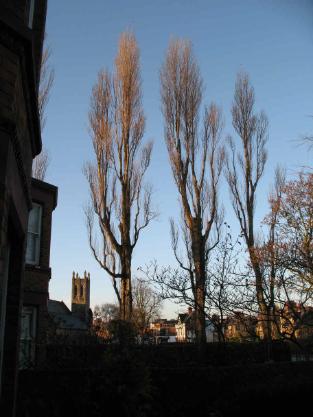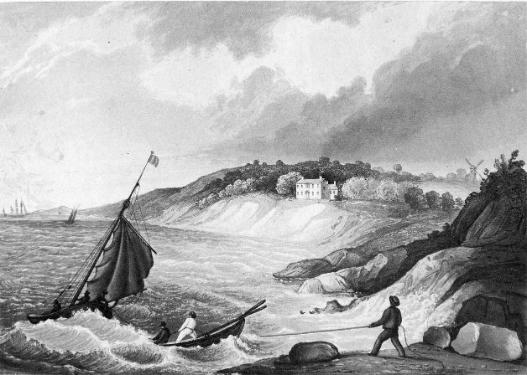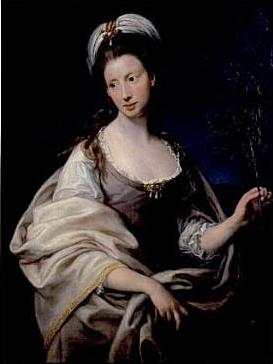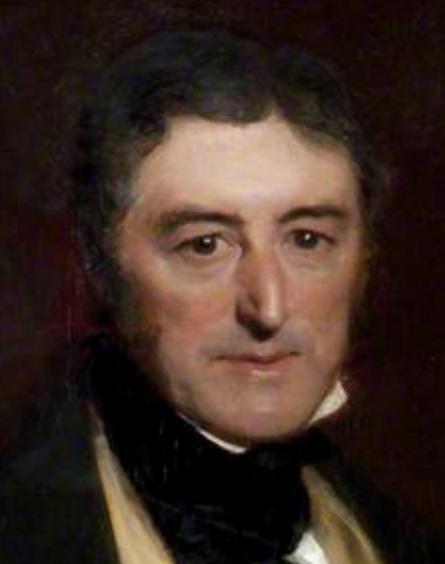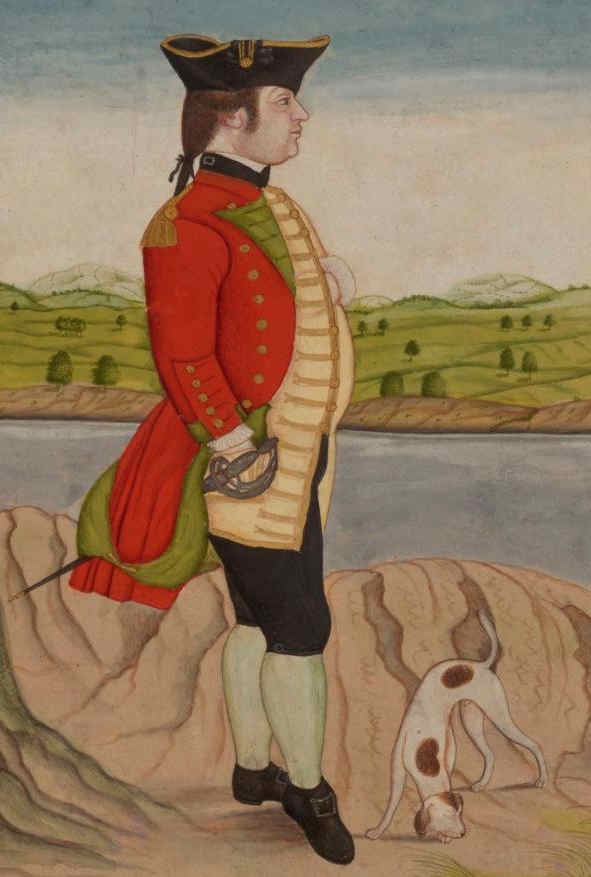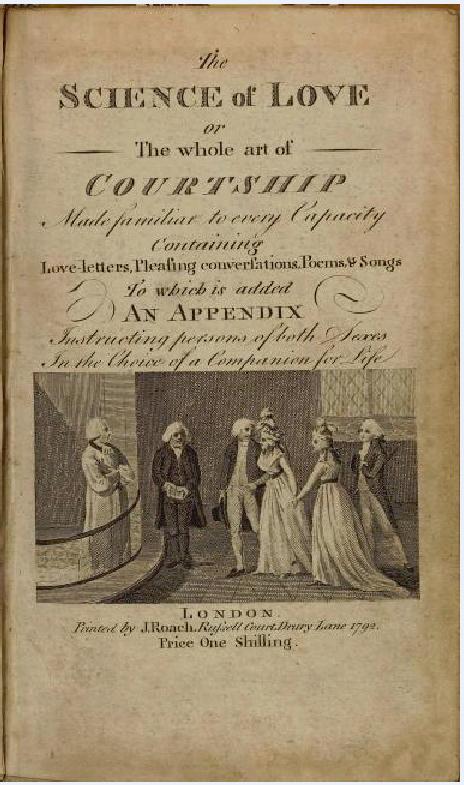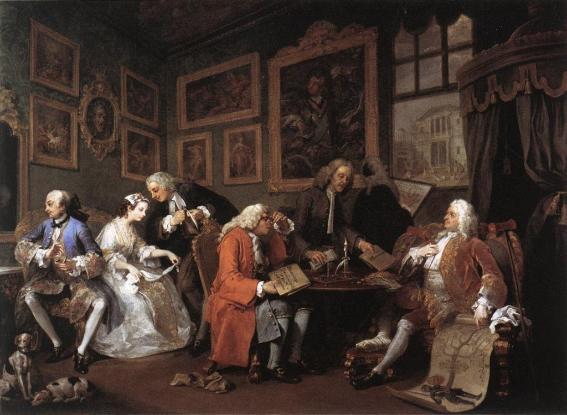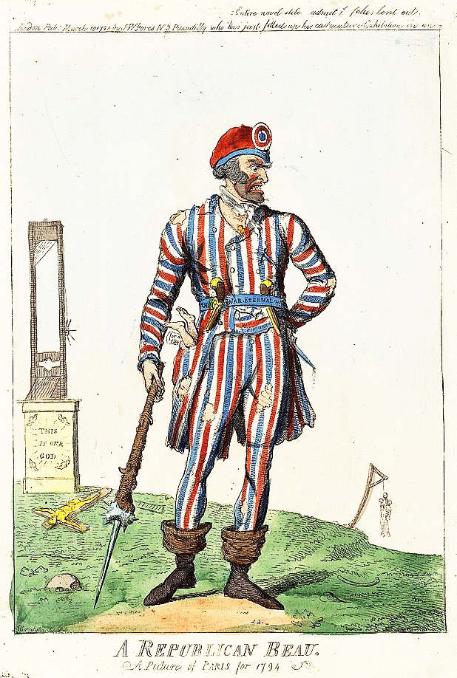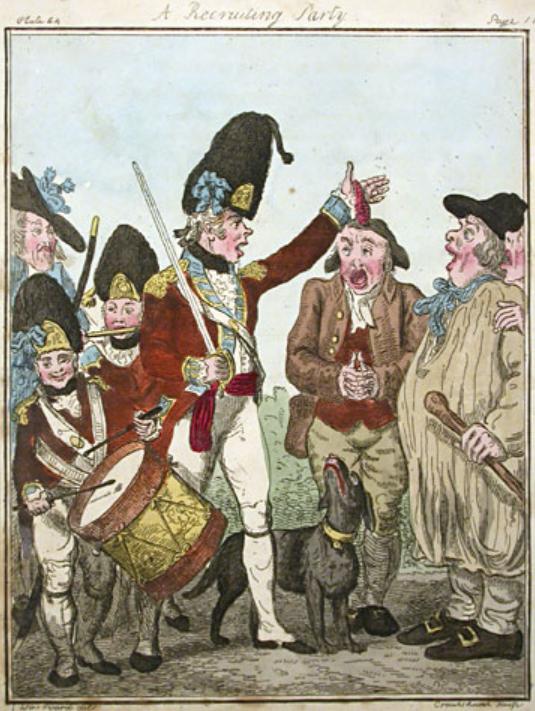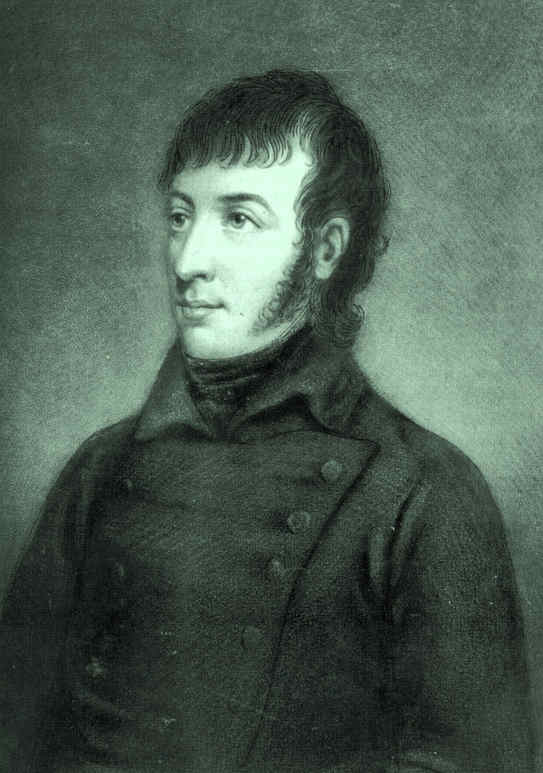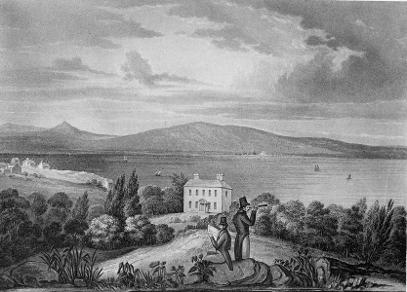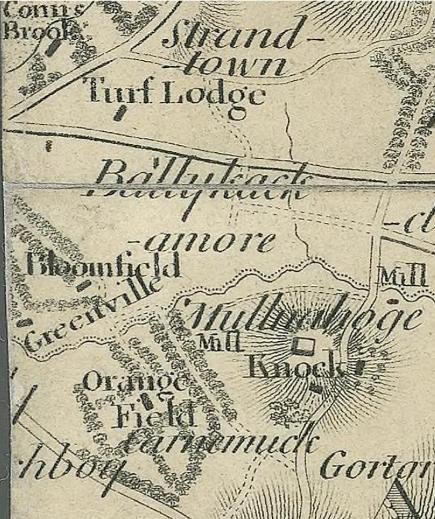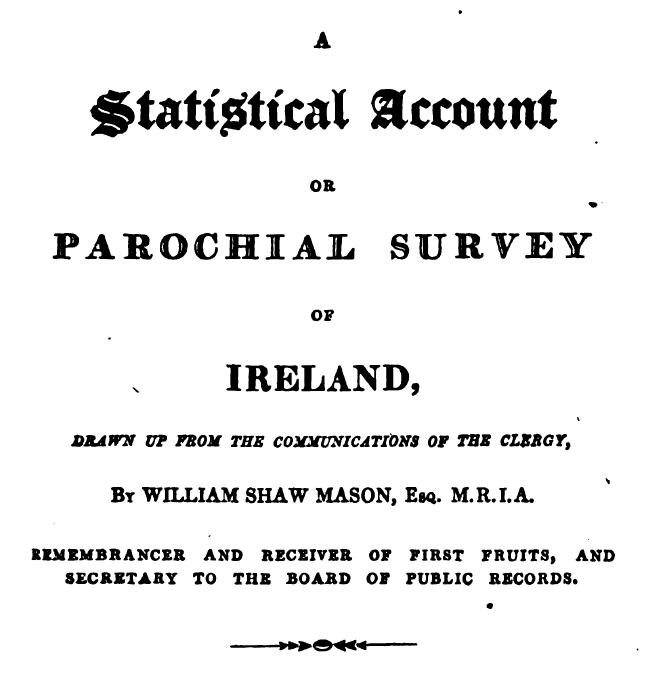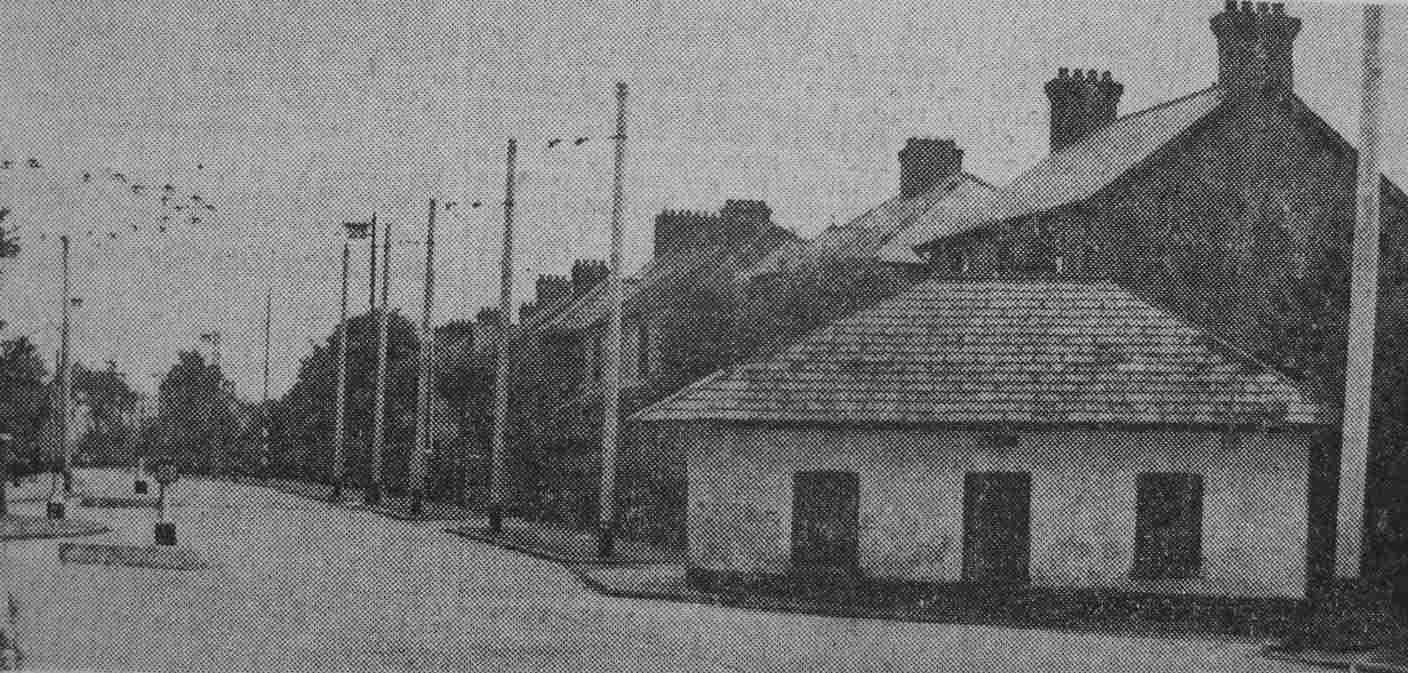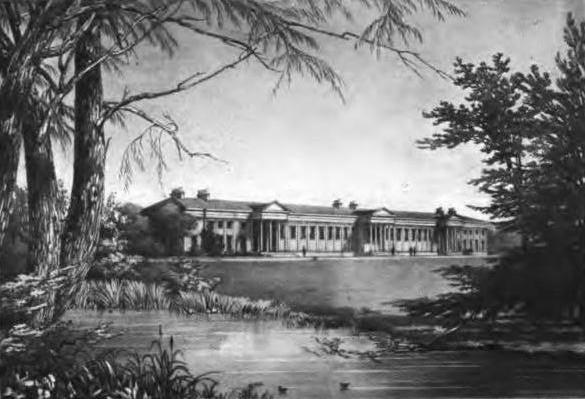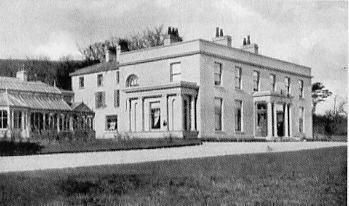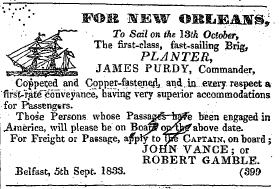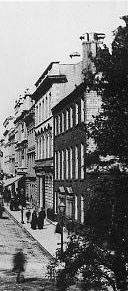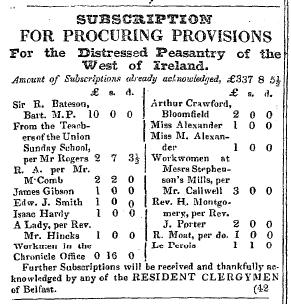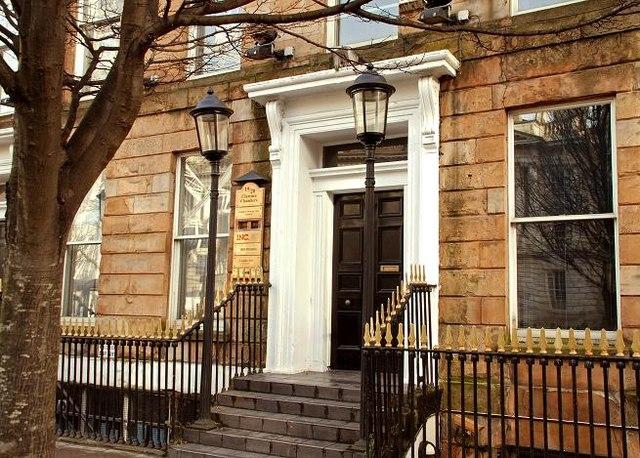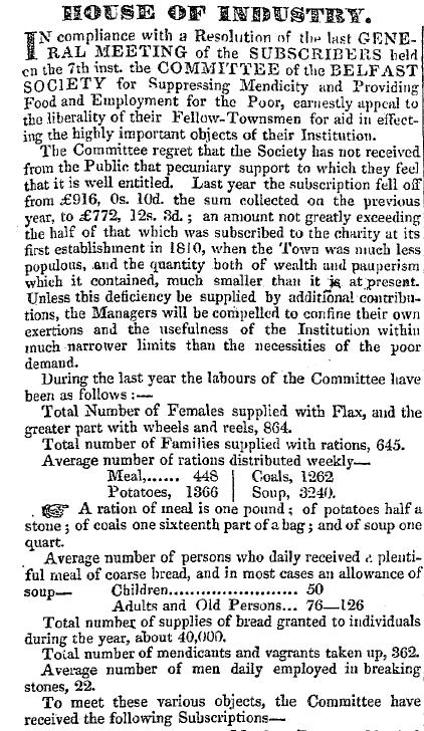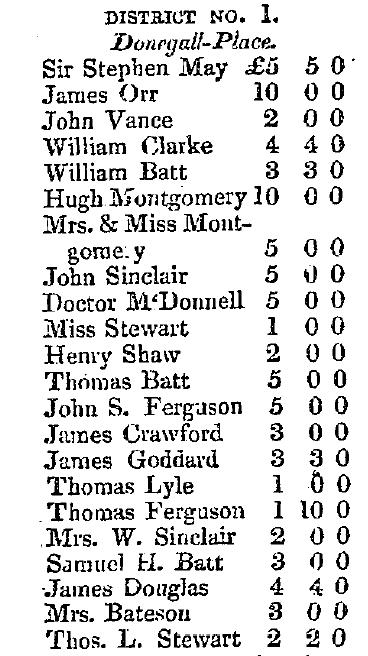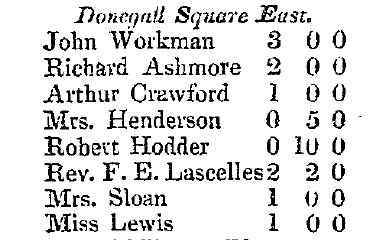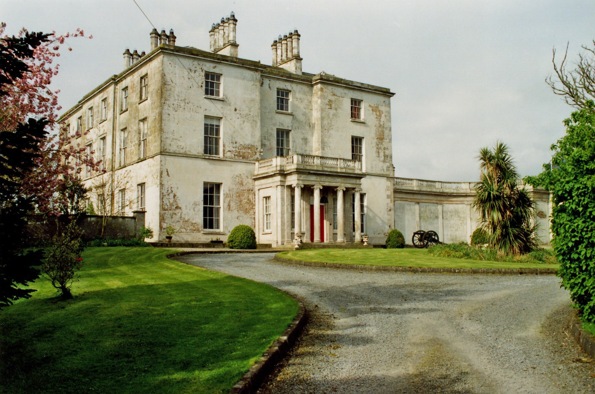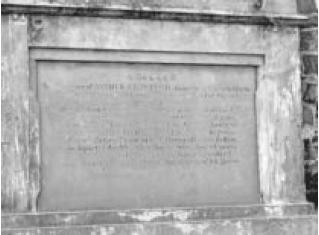From 1798, for the next 30 years or so, Bloomfield House was occupied by Arthur and Theodosia Crawford and their children.
Before exploring Bloomfield life during those years, this page looks at Arthur's family and its forebears - the Crawfords of Crawfordsburn, Co. Down - and Theodosia's father, James Waddell of Magheralin.
It also reflects the troubled times around 1798 with the United Irishmen and Arthur's part in the trial of Thomas Russell in 1803.
Unlike the previous occupants of Bloomfield House, the Crawford family would spend a considerable time there.
Arthur Crawford (c.1749-1833), one of the Crawfords of Crawfordsburn, Co.Down, settled in Bloomfield House and Farm in 1798.
In 1625, an Andrew Crawford leased a mill and land in Co. Down from Lord Claneboy.
Perhaps William
Crawford, who purchased the Crawfordsburn estate in Co. Down from Lord
Clanbrassil in 1670 was
Andrew's son or grandson. There is uncertainty about the name of William's wife. It may have been Ursula (her maiden name is unknown).
William
was succeeded by his son John Crawford (Arthur's grandfather) who
married Jane Crawford of Ballysavage, perhaps a cousin or distant
relative.
John and Jane's son, James Crawford, was Arthur of Bloomfield's father.
LH pic: Crawfordsburn House drawn c.1829 by Joseph Molloy (1798-1877). This building, c.1820, replaced a mid-18th century house. Molloy was the drawing master at the Royal Belfast Academical Institution.
James Crawford married Mabel Johnston of Rademon House, Crossgar, Co. Down, in November 1740.
It's interesting how all these families intermarried and built up their wealth. Mabel, the daughter of Hugh Johnston, was sister and heiress of Arthur Johnston (1721-1814), MP for Killyleagh, Co. Down (1769-1776).
James and Mabel Crawford had four sons and three daughters. James died in April 1777. "I suppose you heard of poor Mr. Crawford’s generally lamented death", wrote Martha McTier to her brother William Drennan.
- James and Mabel's eldest son, John Crawford (c.1744-1827), inherited Crawfordsburn and Rademon House. He was a supporter of the United Irishmen and a good friend of Martha McTier. Further information below.
- The second son was Arthur Crawford (c.1749-1833) of Bloomfield. More of him anon.
- The third son, William Crawford (1757-1834), moved to Cork. He's the Crawford of the brewers Beamish & Crawford, and the grandfather of the Crawford who was the benefactor of Cork's Crawford Art Gallery. The brewery was established in 1792 and quickly became the largest brewery in Ireland, only overtaken in 1833 by Guinness. William married Mary Bordman (or Elizabeth Cooke?) and then Mary Uniacke.
- There was a fourth son, James. His dates are sometimes given as 1757-1787, but given his military career it's more likely that he was born sometime between 1746 and 1752. He served in the Bengal Army of the East India Company: joining as a Cadet in 1767; Cornet, Ensign, or Second Lieutenant 20 July 1767; Lieutenant 19 April 1769; Captain 9 April 1777; Major 26 July 1781. Major James Crawford died in Madras on 24 August 1787. He left a daughter Jane. Was James the "Jemmy" referred to by Martha McTier in an undated 1787 letter: "… Jemmy Crawford is on his return with £60,000 …" Sadly he never did return from India.
- The eldest daughter, Jane Crawford (1751-1835), never married.
- Anne Crawford (c.1753-1777) married James Alexander
(1730-1802) who made his huge fortune in the East India Company ("the greatest Nabob in Ireland") and
became the Earl of Caledon. Anne had married James Alexander in 1774, but she died in December 1777, just a week after giving birth to Du Pre Alexander who eventually succeeded his father as 2nd Earl of Caledon.
Earlier in 1777, James and Anne had visited Rome where Anne's portrait was painted (RH pic) by Pompeo Batoni (1708-1787), one
of the great and fashionable Italian painters of the time. The shawl conceals her pregnancy and the sprig of myrtle she holds is a symbol of fidelity and eternal
love.
"Gentleness, too, is the salient quality [in Batoni's portrait] … Her name is Mrs. James Alexander. If the wistfulness in her eyes doesn’t get you, the delicacy of her skin and pewter silk bodice surely will. She’s … melancholy and reflective …"
Patricia C. Johnson, Houston Chronicle, 27 November 2007
RH PDF: Further information on the Earl of Caledon and his mansion:
The Earl of Caledon was a strong supporter of the Union, receiving £15,000 compensation at the time for the borough of Newtownards which he'd bought for £10,000. There's a reference to this purchase of Newtownards - and the appointment of John Crawford as its Mayor - in a letter from Martha McTier at Cabin Hill to her brother William Drennan in Newry in 1787, probably June:
I went to see Mount Stewart and met with no one thing worth notice, unless great wall pounds are so – much expense, no taste, every thing unfinished and dirty, grand plans for the future, nothing pleasant nor even comfortable at present. We dined at Newtown[ards], and the same day Nabob Alexander was entertaining, under the nose of the Stewarts, his burgesses for the borough for which he paid £10,000. The two Alexanders of Belfast, one of Derry, Hammy McClure, his brother-in-law, Arthur Johnston [MP for Killyleagh], etc., were appointed, and J[ohn] Crawford was made mayor. He laughed away most of the day with us at the unanimity of his election and had all our wishes for being soon returned of [ = for] parliament.
- Mary Crawford (b.1768) married David
Gordon (1759-1837) of Florida and Delamont, Co Down, in 1789. Gordon was an important banker whose father had inherited Florida Manor from David Crawford through marriage. David Gordon was a J.P. and Deputy Lieutenant for Co. Down, and High Sheriff, 1812.
Just to finish this guided tour of the
Crawford family: In 1784, John Crawford, Arthur's elder brother,
married Maria Kennedy (c.1748-1829), daughter of Hugh Kennedy of Cultra, Co. Down - a neighbour from just
further along the North Down coastline (see the maps on the left - click on the thumbnails). Some commentators give the
wedding as 1774, but Martha McTier confirms the date in a letter written to her brother
William Drennan on Saturday, 3 January 1784:
Hill Wallace I believe was married last night, and gets £5,500 fortune – her brother has given them a chaise and behaves very well. J. Crawford gets Miss K[ennedy] and £4,000 next week. He is really happy as she is the only woman he ever loved – though despair of ever succeeding and the desire of his relations tempted him to think of Miss Legg*. He liked her very well and was well received, but while he visited and before he put the query, he observed a mark on her arm which ended the matter. Miss Kennedy’s acceptance of him now and former refusal is said to be owing to an affair of a long standing with a cousin of her own in England. Her mother declared such an abhorrence of this match on her death bed that Miss K drew back, and would never think of marrying while he continued to wish she should not, but his being now on the verge of it herself [sic], she will not let him get the start of her. This is the story but not the one believed, as it’s thought A. Stewart might have altered the whole matter.
*Jean Agnew points out that Hill Wallace's bride was Miss Legg - Ellen Legg of Malone House.
John and Maria had two children. Their only son was Arthur Johnston Crawford who died
unmarried in 1826, aged 40. The Crawfordsburn estate was inherited by the husband
of John and Maria's only other child, their daughter Mabel Fridiswid Crawford -- on condition he would
assume the Crawford name. On 5 December 1805 Mabel had married William Sharman (1780-1861)
and so her husband became William Sharman-Crawford. He was a strong supporter of the Union and an important and radical reformer. He campaigned for tenant-rights in Ireland and emancipation and political rights for Roman Catholics. He was MP for Dundalk and then Rochdale in England. One of his sons, James
Sharman-Crawford, of Rademon House, near Crossgar, Co. Down, was MP for
Co. Down (1874-8).
Read more about William Sharman-Crawford in his own words in the PDF on the right - or here.
An online source for Crawford family genealogical information is available here.
RH pic: Detail from the portrait of William Sharman-Crawford by John Prescott Knight (1803-1881) . The painting is in the Ulster Museum and may be viewed here. The PDF on the right (top) is a fascinating genealogical treasure-trove - a transcript of a letter written by John Crawford in 1811.
The PDF on the right (bottom) is my outline of the Crawford family's lineage from the time of William Crawford c.1650 to Bloomfield's Arthur Crawford (c.1748-1833) and explores links between Crawfordsburn, Ballysavage and the Belfast MP William Crawford.
Arthur Crawford and his marriage
What does the No.2 son do with his life? Elder brother John would inherit the estate ... Soldiering was the answer.
These years, around the last quarter of the 18th century, were a period of rapid expansion for the British East India Company’s Madras Presidency. And that's where Arthur headed, sailing to Fort St George in Madras, a journey of approximately four months at that time.
Arthur Crawford signed up in 1768 as a cadet in the army of the Honourable East India Company.
He was commissioned as a Cornet, Ensign or Second Lieutenant on 28 September 1770; then as Captain on 22 December 1782. He resigned in January 1789. (Source: Dodwell, Edward and Miles, James Samuel. Alphabetical list of the officers of the Madras army; with the dates of their respective promotion, retirement, resignation, or death, whether in India or in Europe; from the year 1760, to the year 1834 inclusive, corrected to September 30, 1837, Longman, London, 1838.)
LH pic: Detail (reversed image) from a watercolour by an unknown Indian artist, c.1770, of a military officer of the East India Company.
After his resignation from the army, and just over one year after the death of his younger brother James, Arthur returned to the family home at Crawford’s Burn. He is one of the Crawfords listed as a subscriber to the Rev. John Anketell's Poems on Several Subjects, published in 1793: "Arthur Crawford, Crawford's Burn."
The following year, 1794, Arthur Crawford married Theodosia Waddell in a double wedding along with her sister Jane.
Belfast News Letter, 25-28 March 1794:
Yesterday was married at Springfield, near Dromore, Arthur Crawford of Craigavad, Esq. to Miss Theodosia Waddell; – and at same time and place, John Turnley of Newtownards, Esq. to Miss Jane Waddell.
We know from the listing of those in the Northern Whig Club that Eldred Pottinger (?-1814) of Mount Pottinger, Co. Down, was living at Craigavade [sic] in 1790. See PDF below.
See also Taylor and Skinner's map of 1778 below (please click on the thumbnail).
Like all these families, there are fascinating interconnections. Eldred Pottinger's wife Anne was a sister of David Gordon who was himself married to Mary Crawford.
Craigavad was the property situated between Crawford's Burn and Cultra (the home of the Kennedy family).
So, on or just before Arthur's marriage, Craigavad was where he had taken up residence.
His bride Theodosia (c.1763-1849) and her sister Jane were the daughters of James Waddell of Springfield.
The Belfast News Letter carried a death notice "at Rockport" (the home of John Turnly (1764-1841)) for Miss Isabella Waddell, fourth daughter of the late James Waddell of Springfield, 7 June 1825. The same paper also recorded the deaths of (1) Miss Waddell, daughter of the late James Waddell of Springfield, 17 October 1809; and (2) Miss Jane Waddell, Springfield, 3 March 1812 - a niece?
The list of Volunteer companies and Militia that marched to oppose the French in February 1760 had included the following:
Lord Rawdon’s Regiment, under his Lordship’s Command. —
Moira, 13 men, his Lordship’s company, commanded by Captain Stothard, arrived on Friday [22nd].
Dromore, two companies, 183 men, commanded by Captains Coslet Stothard and James Waddell, guarded the French prisoners to Banbridge, and arrived in Belfast on Saturday. 60 armed with back swords and pikes.
Gilford, 90 men, one half armed with guns, commanded by Captain Acheson Johnston, arrived on Saturday.
Waringstown, 60 men, commanded by Captain Samuel Waring, arrived on Sunday; and on same
day the Magheralin force, 30 men, commanded by Captain Charles Douglas.
James Waddell was named as the trustee and guardian of Coslet Stothard’s two sons in Coslet’s will, dated 13 September 1768 and 11 March 1774. Coslet was knighted at Dromore by the Lord Lieutenant on 1 August 1787.
Years later, vestry minutes mention the Waddell and Douglass [sic] families - both with an important presence in the parish of Maralin or Magheralin.
At the Vestry duly called and held within the Parish Church of Maralin on Thursday, the eighth of September, 1796, we the Minister, Churchwardens and Parishioners then present agreed that the sum of one penny per acre be levied and raised of said inhabitant land holders of the said Parish, to repair the by-roads in the said Parish and if further agreed that all Townlands that have a proper road into said Town shall have the accounts of their own towns to repair the same and that the towns that have no roads to repair, that the cess arising from said towns shall be expended on the most principal by-roads in said Parish, and we appoint Jas. Waddell and Thos. Douglass, Esqs., Directors of said roads, and we appoint the former overseers of said roads to continue for the present year.
1796 was the year in which the Insurrection Act gave Magistrates like James Waddell the right to search for arms and to hang anyone administering an illegal oath. In August that year he wrote:
I am sorry to tell you that I have been obliged to order the troops back again to Maralin [Magheralin]. They [the rioters] killed a Roman Catholic on Saturday night in a riot, but Thos Douglas and I had the offender taken yesterday and sent to gaol.
James Waddell, Esq. of Springfield, Magheralin, Co. Down, died in Belfast just over a year later - duly noted in The Gentleman’s Magazine, January 1798,
Vol.83, page 85.
Some 40 years later, James wouldn't have recognised his former home. Lewis's Topographical Dictionary of Ireland (1837) notes "an extensive establishment at Springfield, for the manufacture of cambrics, [which] affords employment for 250 persons. The principal seats [in Magheralin] are Grace Hall, the residence of C. Douglass, Esq.; Drumnabreagh, of M. Stothard, Esq.; Newforge, of Cosslett Waddell, Esq.; Springfield, of J. Richardson, Esq. ..."
James Waddell's neighbour, Thomas Douglass of Grace Hall, Magheralin, was one of the trustees of the marriage settlement* of Arthur Crawford and Theodosia Waddell.
*A marriage settlement ring-fenced
the bride’s wealth. It placed her money under the control of trustees
who could arrange that she received an income from the investment of the
money. Such settlements gave the wife a sense of financial security –
her husband couldn’t touch that money. In the event of her death, the
money went to her children or, if there were no children, back to her
family.
RH pic: The Marriage Settlement, No.1 of Marriage à-la-mode by William Hogarth, 1743.
Politics, 1798 and the Crawfords
It wasn't a smooth start for the newly weds. Early in July 1795, Martha McTier wrote to William Drennan in Dublin:
A fever certainly prevails here, though its having been mostly among the better sort marks it perhaps more to us than at other times. … Mrs A. Crawford of Craigavade lies ill and Margaret Kennedy [sister of James Traill Kennedy] is supposed to be [in] a hectic [consumptive fever], for whom affectionate Jemmy has had three physicians and offers to take her any place they will recommend – at present she is at Cabin Hill.
These were difficult years on the political front. In September 1796 Martha McTier mentions a government informer who was "lodging at the end of the Bridge [Belfast's Long Bridge], in the house of a woman, wife to a servant at Craigavade". The informer had "sworn against the servant of [Arthur] Crawford."
Martha McTier and William Drennan were embroiled in the exciting politics of the day. Both were fervent supporters of the United Irishmen, calling for Catholic emancipation and supporting the Volunteers. In 1783, Drennan had written electioneering letters to the freeholders of Co. Down recommending the reform candidate, Robert Stewart, who would eventually become the Marquess of Londonderry. The following year the Volunteer movement had lost its fervour and Drennan published his Letters of Orellana, an Irish Helot (Dublin, 1785) urging more zeal among the Volunteers, bringing himself to public notice at the same time. His appeal to the Volunteers 'to unite Protestants and Catholics in the common cause of freeing Ireland from English domination' was, as Guy Beiner has written, 'influential in the development of the United Irish ideology' (Forgetting Remembrance ... OUP, 2018).
LH pic: Guard-Room tactics; Bugs in danger, or a Volunteer Corps in action - a 1798 caricature
John Crawford took an active part in all these affairs, as witnessed by the many mentions in Martha McTier’s correspondence. The following examples from 1792 and 1793 give a flavour of the times and an interesting link to Thomas Russell, who was appointed librarian to the Belfast Society for Promoting Knowledge (which eventually become the Linenhall Library).
In a decade’s time Russell’s life and that of Arthur Crawford would intertwine with fatal consequences for Russell.
Martha McTier, Belfast, to William Drennan, Dublin, 1792:
This evening we had a meeting of our select society; where we were unanimously of opinion that the Catholic Committee should ask nothing short of total emancipation and full right of citizenship, this to be intimated by this post to [Wolfe] Tone and you. Tomorrow evening there is to be a meeting of all the societies of the U[nited] Irishmen in order to lay their opinion before the committee and it is supposed that will be that nothing short of a radical reform will answer the ideas of the people here. [Thomas] Russell will inform you farther of their intentions. … There are three new Volunteer companies to be raised here immediately, they are to be formed into a battalion and it’s in contemplation to offer the command to J. Crawford.
Martha McTier, Belfast, to William Drennan, Dublin, January 1793:
G[awn] Hamilton was called to the chair [at the Co. Down meeting] by several voices, but opposed; John Crawford, in the same way; but the cry was, we cannot want them, we cannot want them; when Ford proposed the committee, Isaac was named, several ayes, not a no, so by Johnston; when G Hamilton, a general shout of approbation, and to J. Crawford the house rung ...
When J. Crawford was put in the chair, he declared he could not leave it till he declared that that day was the happiest of his life, that he pronounced the country free, and that he hoped they would join him in giving it three cheers. They gave nine – or rather a continued one all the way home. Had the noble lord of Londonderry supported his family character or his own, such a man and J.C. might have done what they pleased. How far superior is the latter at all times but particular such as these to any lord I ever knew.
Martha McTier, Belfast to William Drennan, Dublin, February 1793:
… Jack Crawford called here yesterday morning before he went to Ballynahinch, eager for news of the Dublin Volunteers … He flew off in great indignation saying that between the hot headed and luke warm the nation would be lost, and reprobating the Dublin Volunteers.
The United Irishmen were opposed to sectarianism and sought independence for Ireland. Their rise was, in part, a reaction to the activities of the Protestant Peep o’ Day Boys who persecuted Catholics, particularly between the hours of dusk and dawn.
In 1795, the Peep o’ Day Boys morphed into the Orange Society, later the Orange Order, which was determined to maintain the Protestant Ascendancy.
Meanwhile, by 1794, the United Irishmen had been outlawed and the support of many once radical Belfast merchants and members of the landed gentry waned, not least because of the bloodletting and society revolution in France, but also because of worries over too quick a move towards Catholic emancipation.
Many of the landed gentry and the merchants now redirected their support towards the Yeomanry whose job was to support the Crown and the regular army. The object was to maintain public order and resist any attempt at revolution, whether from the French or from the United Irishmen (witness, as already noted, William Rainey of Greenville becoming the first lieutenant of Belfast’s Yeoman Cavalry Corps in 1797).
RH pic: A Republican Beau - a portrait of Paris, 1794, by Isaac Cruikshank
Henry Joy described these troubled times in Belfast:
Above: A Recruiting Party by Isaac Cruikshank, 1797.
During the year 1797, the town of Belfast exhibited a shocking scene of confusion and outrage – of assassinations, informations, arrests, and military violences; and to such a state of subjection were the conspirators reduced by the unremitting vigilance and exertions of the civil and military powers that while insurrection had burst out, in the following year, and was blazing forth in various parts of Ireland, not the slightest symptom of commotion betrayed itself here – and the editor clearly recollects the death-like silence which pervaded the streets when the counties of Down and Antrim resounded with the noise and tumult of battle.
The usual consequence attendant on an unsuccessful insurrection now began to appear; multitudes of prisoners were brought in from the surrounding country, and of these several were devoted to an untimely end and by the summary mode of Court-martial. –
Such was the unfortunate issue of this ill-fated conspiracy in the North of Ireland.
During these disturbed times, several gentlemen and their families have, within these few days, came in from their country seats to reside in town; and [a] number of ladies, and their families, sailed from this Port for England and Scotland.
June 12 [1798]. – The insurrection broke out in the County of Down, in consequence of which, this town is crowded with families, who have fled here for shelter from the rebels.
William Magill was executed on a lamp-post, opposite the Market-house, pursuant to sentence of Court Martial, for swearing soldiers from their allegiance.
The commander of the Belfast troop of cavalry in 1798 was American-born Cortlandt Skinner (1766-1842), formerly a captain in the 70th Regiment. He was the son of Cortlandt Skinner (1727-1799), who had been Attorney-General for New Jersey, speaker for many years in the provincial Assembly, and then a distinguished Brigadier-General of British forces based on Staten Island during the American War of Independence. In 1803, Cortlandt Skinner jun. served on the jury with Bloomfield's Arthur Crawford for Thomas Russell's trial in Downpatrick.
It’s clear where John Crawford’s sympathies lay across the 1780s and into the 1790s - though things had completely changed by the time of Thomas Russell's trial in 1803 when Crawford was a member of the Grand Jury.
The sympathies of his younger brother, Captain Arthur Crawford, remain decidedly enigmatic, though I suspect he was more closely allied to the establishment than his brother John had once been. As already mentioned, Arthur was a member of the Petty Jury for Russell's trial.
In 1798, the year of the death of Theodosia’s father and of the ill-fated rebellion of the United Irishmen, Arthur and Theodosia Crawford moved into their new residence – Bloomfield House.
Thomas Russell and Arthur Crawford
Thomas Russell, born in 1767, remembered as “The man from God knows where”, and a friend of Wolfe Tone, was one of the leading members of the Society of United Irishmen.
They were fired by the ideals of the French Revolution and the anti-slavery movement and argued for Catholic emancipation and parliamentary reform.
When such reforms were not forthcoming, an emerging goal became Irish independence from Great Britain.
In 1794, Russell (pictured on the right from Madden's 1846 The United Irishmen) became the librarian of Belfast’s Society for the Promotion of Knowledge (later the Linen Hall Library). Within a couple of years he had become the leader of the Co. Down United Irishmen, only to be arrested and imprisoned in Dublin.
Despite never being charged with any offence, in 1799 Russell was sent to the Fort George prison near Inverness in Scotland and eventually released in 1802 and exiled to Hamburg. From there he travelled to Paris, meeting up with Robert Emmett and other United Irishmen. They planned a new uprising in Ireland and Russell returned to Co. Down in 1803 where he failed to muster sufficient support. The rebellion simply petered out.
Russell was arrested once more when he arrived in Dublin to rescue Emmett who was already in custody. Along with three others, Russell was tried in Downpatrick in October 1803 for high treason.
Walker’s Hibernian Magazine reported the trial (read part of the transcript here) and in its listing, printed below, I have filled out the jurors' Christian names where known (they were originally printed as initials plus surnames):
Downpatrick, October 20, 1803
Yesterday morning, at ten o'clock, the court met pursuant to adjournment, when Thomas Russel [sic] was put to the bar, charged with high treason, under the statute of 25 Edward III.
The prisoner and the crown mutually waiving their right to challenge, the following gentlemen were sworn of the jury, viz.
Sir James Bristow, foreman.
Thomas Douglas, esq.
Thomas Waring, esq. [of Newry]
Hugh Kennedy, esq.
Ross Thompson, esq. [of Newry]
Edward Southwell Ruthven esq.
James D. Rose Cleland, esq.
James Moore, esq.
Cortlandt Skinner, esq.
C.H. Moore, esq. [Col. Hugh Moore?]
Arthur Crawford, esq.
Thomas Potter, esq.
The attorney general [Standish O'Grady] opened the case, in a very eloquent and able speech of considerable length, recapitulating the crimes with which the prisoner stood charged ... etc.
So Russell was found guilty, to the great sorrow of Martha McTier and Mary Ann McCracken. And Bloomfield’s Arthur Crawford was a member of the Petty Jury.
The jury foreman was none other than James Bristow, brother of Rev. William Bristow, vicar of Belfast. As noted before, Sir James, a married man, was notorious for his long-lasting affair with the wife, later the widow, of Thomas Bunbury Isaac, of Holywood House, but formerly of Bloomfield House.
There were two different juries in the system. The Grand Jury didn't listen to any defence arguments; its role was to assess the indictments, listen to witnesses and the prosecution case. Then it would decide as to whether there was a case to answer.
If the case was to be proceeded with, the Petit (or Petty) Jury would then hear the evidence, reach a verdict on the guilt or innocence of the defendent. If guilty, the judge would determine the statutory penalty.
Interesting to see so many of Crawford’s establishment friends also on the jury – Hugh Kennedy of Cultra, James Cleland, likely Crawford’s landlord, – and surely that's Thomas Douglas, the Douglass of Grace Hall, Magheralin, a trustee of Theodosia Crawford’s marriage settlement?
One of the magistrates involved was none other than David Gordon, Arthur's brother-in-law.
The judge was Baron George.
This is the closing section of the account of Russell's trial in Walker's Hibernian Magazine, October 1803.
The evidence for the crown having been closed, the prisoner declined calling any witnesses in his defence, and allowed the case to go to the jury on such evidence as had been adduced on the part of the crown.
The hon. baron George, with his usual ability and precision, recapitulated the evidence which had been adduced; and the jury having retired only for a few minutes, returned a verdict of GUILTY, against the prisoner.
The prisoner having been asked, in the usual form, if he had anything to say why sentence of death should not be passed against him, addressed the court in an eloquent and energetic, though rather a somewhat unconnected speech of about twenty minutes, in which he took a view of the principal transactions of his life for the last thirteen years; and on a retrospective view of which, he said, he looked back with triumph and satisfaction; he endeavoured to vindicate his conduct from the criminality attached to it, by asserting, that in all he had done, he had acted from the conviction of his conscience; and anxiously requested that the court would make him not only the first but the only life which should be taken on the present occasion; mercifully sparing to their families and friends the lives of those men, whom it was asserted he had led astray.
The hon. baron George, in an address of considerable length to the prisoner, most sincerely lamented, amongst a variety of other things, that the prisoner had not been endowed with better principles, and a better heart, than that which he had lately as well as on former occasions, manifested; and expressed his most anxious wish, that the prisoner would employ the little time he would have in this world, in making his peace with God, and in endeavouring to atone for the incalculable miseries his crimes and infatuated conduct have brought, and will yet bring, upon not a few of the members of that community, of which he himself was once a worthy and a deservedly esteemed member.
The learned judge then pronounced the awful sentence of the law, which the prisoner listened to with the greatest composure, bowed respectfully to the court, and then retired in custody of the sheriff.
The above trial occupied the attention of the court from ten in the morning till past eight in the evening.
Thomas Russell was hanged outside Downpatrick Gaol, decapitated and buried in the graveyard of the parish church - Down Cathedral – a grave paid for by his friend Mary Ann McCracken.
For further reading and transcripts see the website of Down County Museum here. LH pic: The Russell plaque at Down County Museum. This copyright photo, by “Ardfern”, is used courtesy of a Creative Commons Attribution-Share Alike 3.0 Unported licence.
The Government - Dublin Castle - wanted Russell dead, not least as a warning to any others intent on rebellion.
Russell's address to the court was pointed (the emboldened italics are mine) particularly for John Crawford:
Perhaps as my voice may now be considered as a voice crying from the grave, what I now say may have some weight. I see around me many, who, during the last years of my life, have disseminated principles for which I now am to die. Those gentlemen who have all the wealth and power of the country in their hands, I strongly advise, and earnestly exhort, to pay attention to the poor, – as by the poor, I mean the labouring class of the community, their tenantry and dependants. I advise them, for their good, to look into their grievances, to sympathise in their distresses, and to spread comfort and happiness around their dwellings.
James D. Rose Cleland, one of the Petty Jury, wrote a short memorandum which comments on those to whom Russell was referring:
The trial of General Thomas Russell took place at Downpatrick, on the 20th of October, 1803; from the number of witnesses examined, it occupied the whole day. The petty jury, (of whom I was one,) were all gentlemen of landed property. Mr. John Crawford, of Crawfordsburn, and Mr. Eldred Pottinger, were on the grand jury.
The General was convicted on the clearest evidence; on his being asked, what he had to say, why sentence of death should not be pronounced against him, he made a long speech, professing highly honourable and religious principles, and also observed, that he could not but feel surprised to see gentlemen on the jury, (looking at the grand jury box,) who had often expressed and advocated political opinions similar to those on which he acted, and for which he had forfeited his life, for the sentiments publicly delivered by them, had assisted to influence his conduct, having formed a high opinion of their honour, integrity, judgment, and ability; (it was supposed that he alluded to Mr. Crawford and Eldred Pottinger.)
He afterwards told Captain Gordon, six of the jury were United Irishmen. (There were many conjectures [as to] who they were, but he included probably persons on both grand and petty juries.) ...
Arthur Crawford's financial dealings
I have only managed to track down a few details of Arthur Crawford's business
activities which involved various deeds, marriage settlements and investments. His considerable resources suggest that he surely benefitted from family money and whatever funds he must have brought back from his time soldiering with the East India Company.
The PDF on the right lists most of
Arthur's surviving financial dealings - including the one which follows directly below in more detail. It's interesting to note the reappearance as a business acquaintance of Roger Moore
of Cloverhill, Killead (presumably Mrs Hutchinson's nephew).
How things go round in circles!
In 1818,
a difficult economic time following a collapse in the linen trade the previous year, Arthur Crawford had acquired the rights to
a £5,000 bond. Now, in 1830 he was realising his assets.
I came across the details (available in the PDF on the right) in The Norths of Ireland section of the Bomford website. I am indebted to Richard Bomford for this transcript of the deed by Cyril North. It's a memorial of an indented deed of assignment dated 20 August 1830
in which the trustees of the marriage settlement of John Henry North and Letitia North (née Foster) take over a £5,000 bond and charge on the lands of Charles William Vane, Marquis of Londonderry, from Arthur Crawford and Charles Douglas, in return for cash paid to Arthur and Charles (Cyril North email of 3 May 2009). 'The transaction feels like an investment and was done with the consent of all involved.'
While the legalese of the listed documents may prove difficult to understand, the interesting aspects the transactions reveal are the names of Arthur's circle of business associates and the significant sums of money involved (£5,000 in 1813 probably equates to around £170,000 in 2013; it might even be worth much nearer to £250,000 because the £39,000 cost of Belvoir estate in 1811 has been estimated by others at around £2,000,000 today!).
David Gordon, Arthur's brother-in-law (married to Mary Crawford), benefitted from Arthur's support as Gordon sought funds for the recent redevelopment (c.1796) of Florida Manor, Co. Down - a house which originally dated from the 17th century.
David Gordon also re-established Lismood Church of Ireland Parish.
Read more of the Gordon family background on the PRONI website here.
Another of Arthur's associates, unsurprisingly, was his brother-in-law John Turnly - sometimes spelled 'Turnley' - (married to Theodosia Crawford's sister Jane). Both John (1764-1841) and his brother Francis (1765-1845) are listed as matriculating at Glasgow University. Their parents, who lived in Newtownards, were Francis Turnly (1735-1801) and Catherine Black.
Francis Turnly, jun., worked in China from 1796 to 1801 for the East India Company, returning with a fortune of £70,000 (which some commentators have equated to £5,000,000 in today's money). On his return from China, he moved into Richmond Lodge, Knocknagoney, Co. Down. In 1804 he married Dorothea Emilia Rochfort, daughter of John Rochfort (a former High Sheriff of Co. Carlow) and Dorothea Burgh. He bought Drumnasole House, near Garronpoint, Co. Antrim in 1808 and rebuilt the property. He was also the landlord of Cushendall, making many improvements despite his reputation for eccentricity, and building the village's Curfew Tower, c.1817, 'as a place of confinement for idlers and rioters'. See more details and a photo here.
Francis Turnly, jun., and Narcissus Batt (1766-1840) were business partners, importing wine and other alcoholic products from Holland and the Channel Islands (Turnly and Batt, merchants, 52 Ann-street) and for a time running a brewery "at the Bridge End in Ann Street", claimed to be the oldest in Belfast. Narcissus Batt bought Purdysburn House in 1812 and rebuilt it in 1825 in Tudor-revival style. He was also a founding partner in the Belfast Bank, along with David Gordon and friends!
A sister of John and Francis, jun., married the Rev. William Batt, a son of Narcissus Batt. Another brother of John and Francis was Alexander Turnly (c.1775-1850), linen merchant, Ann-street. The eldest son, John Turnly (married to the sister of Arthur Crawford's wife), seems much less colourful by comparison with his brother Francis.
Described on his memorial tablet as 'unostentatious and retiring', John became a neighbour of the Crawfords of Crawfordsburn when he built Rockport House in 1817.
LH pic: Joseph Molloy's drawing of Rockport, c.1828/29, published 1832. Molloy was the drawing master at the Royal Belfast Academical Institution.
"This seat of John Turnly, Esq. is
another feature of this shore which deserves attention.— It comprehends a
good modern edifice, and 78 acres of demesne (Conyngham measure.) It is
embellished with plantations, and very neatly laid out.
The lands
appear in high heart; and in point of prospect, nothing can be more
beautiful than that view of the town of Carrickfergus over the crystal
surface of the bay, which this seat commands. Rockport, which owes its
existence and beauty to the present resident, stands seven miles west of Belfast ..." (A. Atkinson, Ireland exhibited to England: in a political and moral survey of her population ... London, 1823.)
"The lands appear in good heart" is perhaps a tribute to Theodosia's sister Jane. As Mrs Turnly she received an honorary mention in September 1836 in the Northern Whig review of the Belfast Horticultural Society (further quoted in The Gardener's Magazine and Register of Rural and Domestic Improvement, Volume 12, London, 1836) for her "splendid carnation, about 9 inches in circumference".
Domestic Life at Bloomfield
Arthur Crawford and his family were not
particularly newsworthy people.
Apart from the trial of Thomas Russell and the business transactions detailed above, there are just a few references in the newspapers and surprisingly little information or gossip.
Without any evidence, one may only speculate if there was any family strife after the death of Arthur Johnston Crawford (1786-1827), the only son of John Crawford. Arthur's elder brother John then decided to leave the family home, Crawfordsburn, to his only daughter Mabel Fridiswid Crawford (1785-1844) and her husband William Sharman (provided William took on the family name of Crawford, becoming William Sharman-Crawford).
Under the principle of primogeniture, the expected next in line would have been Bloomfield's Arthur Crawford.
Ambrose Leet’s Directory to the market towns, villages and gentlemen’s seats and other noted places in Ireland, Dublin, 1814 lists Arthur Crawford at Bloomfield, Hugh Crawford at Orangefield and John Holmes Houston at Greenville.
All three houses are shown on the right, in an excerpt from A Map of the County of Down, taken from Actual Survey Completed in the Year 1810 by James Williamson.
Williamson (1756-1832) settled in Belfast in 1792 and was an important land surveyor over many years.
There was a passing mention of one of those Bloomfield
neighbours in the details contained in the financial PDFs above.
Hugh Crawford, a founding member of the Belfast Bank, was
living in Orangefield, but by most accounts, and despite the coincidence of his surname, he was not related to Arthur or the
Crawfordsburn Crawfords. Hugh had moved into Orangefield House in 1811 when the Bateson family moved into the much grander Belvoir House, costing them £39,000.
When Hugh Crawford died in 1819, his banking partner John Holmes Houston (1767-1843) who had lived in Greenville after the Raineys left, moved into Orangefield. And of course their other banking partners were David Gordon and Narcissus Batt. Round in circles they go again!
Before exploring Arthur's family and the references to his family in the newspapers, here's a fascinating description of this part of North Down in Arthur Crawford's time.
In Dublin in 1819, William Shaw Mason published A Statistical Account or Parochial Survey of Ireland.
It has a wonderful chapter on the Parish
of Holywood (County and Diocese of Down), written by the Rev. William
Holmes, Incumbent. It mentions that "Bloomfield, the seat of Arthur
Crawford, Esq. on the south side of the
road leading to Orangefield, is nearly two miles from Belfast."
This
next PDF is a transcription of most of that chapter. It offers a
description of the parish, its situation, climate, mines, minerals,
buildings (including "gentlemen's seats"), food and dress of the
inhabitants, beggars, the poorer classes (including theft, immorality,
folk traditions and language), education, churches, farms and farming
methods, mills, Joseph Garner's lime tree at Castle Hill, and a map of
the parish in which are marked the gentlemen's seats.
Page 17 of the PDF contains the key to all the residences marked on the map. Click on the thumbnails below to see all or part of that 1819 map of Holywood Parish. A is Rockport; B is Craigavad; C is Cultra and R is Bloomfield.
In the 1820s Arthur Crawford added a gate lodge to his property. Known as Ivy Cottage, it was demolished in 1954 to make way for the Bloomfield roundabout. There is a photograph (below) of it in the Belfast News Letter, 24 August 1954.
J.A.K. Dean in his gazetteer of The Gate Lodges of Ireland (published by
the Ulster Architectural Heritage Society, 1994) states that the lodge “was
located opposite the entrance on the northern approach to the
neighbouring demesne of Orangefield.” He describes it as “a standard
late Georgian lodge, single storey three bay symmetrical with squared
pane sashes in harled walls. Hipped roof with wide eaves and a chimney
stack rising off the rear wall.”
The four sons - the family of Arthur and Theodosia
Arthur and Theodosia had four sons.
The eldest was James Crawford (c.1795-1840); then came John Crawford (c.1796-1864); Arthur Crawford (1799-1827); and William Crawford (c.1800-1872).
Note: Some of the family names and dates come from Hugh Crawford's compilation of genealogical details, a copy of which is held at PRONI T2715/1. Others come from an invaluable online genealogical source here.
There are some discrepancies between both sources.
As readily apparent from the Crawford,
Turnly and Batt families, the Honourable East India Company played an
important role in wealth creation during the closing years of the 18th
century.
Arthur Crawford jun. (1799-1827) followed in that tradition.
He was recommended for study at the East India College, Haileybury, in Hertfordshire (pictured on the left), which provided education for potential civil
servants of the East India Company. Pupils were young men between 15-20 years of age who had
been nominated by EIC Directors to become 'Writers' or Administrators.
Young Arthur studied there in 1813-1814 and travelled to India aboard the Marquis Huntly in 1816.
As a member of the Civil Service, he became the Collector at Ahmedabad, but he died in Bombay on 28 February 1827 and was buried there.
He was described in the Bombay Almanac as "in his 28th year."
News took a long time to travel in those days!
The Belfast News Letter announced the death on 17 August 1827. So too did the Belfast Commercial Chronicle the next day, Saturday 18 August 1827, on page 3, referring to Arthur as 'Civil Servant in the East India Company's service, and third son of Arthur Crawford, of Bloomfield, Esq.'
The youngest son, William Crawford (c.1800-1872), married Jane Cairns, the daughter of William Cairns of Parkmount House, North Belfast (pictured on the right). Jane's brother was Hugh McCalmont Cairns (1819-1885) who became Earl Cairns of Garmoyle. Hugh entered Parliament as MP for Belfast, became Solicitor-General, Attorney General and finally Lord Chancellor.
William and Jane Crawford had no children. They lived at Dalchoolin House, Cultra - which I suspect was William Cairns' family home before he inherited his father's house at Parkmount in 1819 (Dalchoolin House
stood on the site of the present Ulster Transport Museum). Read more about the Cairns family on Lord Belmont's blog here.
On 20 August 1830, William Crawford of Belfast in the county of Antrim, gentleman, attorney, witnessed the memorial of an indented deed of assignment (quoted in full above in the PDF Transcript from the Registry of Deeds re Deed 1830 862 315 574815) about the payment and return of an advance of £5,000 to the trustees and creditors of the marriage settlement of Arthur Crawford and Theodosia Waddell.
So William Crawford became a solicitor - perhaps not the least of his attractions to the Cairns family!
Matier's Belfast Directory for 1835-36 lists "Crawford, William, solicitor, 14 Arthur-street, and 67 Dame-street, Dublin".
The 1843 Belfast and Ulster Street Directory has:
Crawford & Russell, Solicitors, Offices, 20 Arthur Street & 47 Lower Gardiner Street, Dublin.
Crawford, William, Esq., of Crawford & Russell, residence, Wellington Lodge, County Down.
In the 1852 Belfast and Ulster Street Directory, William Crawford is listed in 24 Arthur Street, Belfast, in partnership with Henry Russell: "Crawford and Russell, solicitors; Dublin address, 46 Lower Gardner Street; W. Crawford's, Dalchoolin, Holywood." They were still going strong in 1861 - and to this day as Crawford & Lockhart in Belfast. Interestingly, there are family relationships between Russell and John Agnew, the next occupant of Bloomfield. Lockhart was the solicitor who dealt with Agnew's widow's will. But that's for the next chapter.
I also assume William's marriage took place after 1830, given this report in the Belfast News Letter, 15 October 1830:
BELFAST FANCY BALL.
The gentleman on whose promise we had depended for a list of the company at the late Fancy Ball, with a description of the characters and costume in which they individually appeared, having been obliged to leave town before he could possibly fulfil his engagement, we have it in our power to insert only a list of the subscribers to the Ball. … We therefore expect to hear, that before next October some of the following names will have disappeared from the bachelors' list: —
Viscount Castlereagh, Mount Stewart; Lord Hamilton Chichester, Ormeau; Lord John Chichester, Ormeau; Sir A. Chichester, Belfast; etc.
The lengthy list of names that followed includes Mr. W. Crawford, Bloomfield and Mr. John Crawford, Crawford’s burn.
Less is known about John Crawford (c.1796-1864).
In 1825, possibly in the West Indies, he married Harriett Mackintosh, 'born in Jamaica'. They eventually settled in New Orleans, probably around 1842, but the birth places of their children reveal some considerable travelling before that.
The following list originally omitted two sons, Arthur and John, who had likely moved out of the parental home by the 1860 census. I've added their names in the most likely gap!
The 1860 US Federal Census listed the ‘Free Inhabitants in The Fourth Ward in the City of New Orleans, State of Louisiana’ for dwelling house 164 (numbered in the order of visitation). The household list begins with John Crawford himself, then aged 63, male, School Master, with a personal estate valued at £1,000, born in Ireland.
His wife is Harriett Crawford, aged 50, female, born in Jamaica. Their children are listed as follows:
Mary Ann [also seemingly known as Marion or Marian], aged 32, female, born in Baltimore
Theodothia [sic; = Theodosia Jane], 30, female, born in Ireland
[Arthur, perhaps 28, birthplace ??]
[John, perhaps 26, birthplace ??]
William, 24, male, born in Philadelphia
Charles, 22, male, born in Baltimore
Mary, 20, female, born in Ireland
Julia, 18, female, born in Ireland
John Crawford died in New Orleans on 2 April 1864. In 1865, Letters of Administration (with the Will annexed) of his personal estate (under £100) 'were granted at the Principal Registry [in Dublin] to Henry Crawford of Belfast ... Solicitor the Attorney of Marian [sic] Crawford and Theodosia Jane Crawford Spinsters Daughters of deceased the Executrixes named in said Will.' (Source: Calendars of Wills and Administrations, 1858-1922, National Archives, Dublin)
There was also the following reference to John - and his shirts - in the Belfast News Letter, Friday 3 April 1829, page 1,
corresponding to the period when John and Harriett were in Belfast for the birth of their daughter Theodosia:
COUNTY OF DOWN ASSIZES
DOWNPATRICK — WEDNESDAY, APRIL 1.
Henry Magee, for stealing four shirts, the property of Mr John Crawford, Bloomfield, on 19th Sept. [1828]
Sarah Smith — Her mistress, Mrs. McMurdoch, washed for Mr. Crawford — four of his shirts were taken from the green at Ballymacarett [sic] — witness saw the prisoner lifting some articles from the green, and being pursued, he dropped the four shirts — three weeks before that some clothes had been taken from the same green, and on the prisoner being taken for the last offence, he informed where the former were to be found.
Mrs. McMurdoch was also examined, and corroborated Sarah Smith's evidence. — Guilty.
Was it John or his elder brother James who made the following gesture to the poor of Ballymacarrett?
I reckon it was John. James had married in 1823 and presumably he'd moved out of Bloomfield House by then.
Belfast News Letter, 21 November 1828:
Arthur and Theodosia's eldest son James Crawford (c.1795-1840) has left a more substantial footprint in history as one of Belfast's leading wine merchants.
James Crawford, Bloomfield, appears in the Belfast News Letter for 19 September 1815 in A list of several persons who have taken out game certificates from the Distributor of Stamps for the County of Antrim, commencing 25th Day of March 1815.
In Pigot's 1824 Commercial Directory of Ireland, Arthur Crawford Esq. of Bloomfield is listed under the "Nobility, Gentlemen and Clergy". His son James is listed under "Wine and Spirt Merchants" at 1 Calender-st [sic] - a not surprising business given the family links to the Gordons, Turnlys and Batts.
Matier's Belfast Directory for 1835-36 lists "Crawford, James, wine merchant, 1 Calendar-street; residence, 18 Donegall-place".
He was also a member of the Committee of Police, "elected on the second Thursday in February, by inhabitants paying police tax to the amount of £2".
In 1838, James Crawford of Donegall Place was one of the 102 members of the newly founded Statistical Society of Ulster. Other members included William Sharman Crawford and John Sharman Crawford, both of Crawfordsburn.
An online source, sadly no longer with open access (at worldfamilies.net), had a mention of James Crawford from an anonymous contributor writing about James Warnock from Ballybryan, Greyabbey. Warnock had been the Belfast-Portaferry Stage Coach Driver.
Amongst the many interesting old people who are spending the evening of
their days within the walls of that excellent institution [the Poor House] at Clifton
Street, Belfast, managed by the Belfast Charitable Society, ... there is no more
interesting or intelligent inmate than Mr. James Warnock, who is now in
his 93rd year.
Mr. Warnock was born in the good old days when George
the Third was King, viz. on 27th June 1818, or three years after the
Battle of Waterloo. ...
After his school days the lad went to
Portaferry, and took charge of the stables in a hotel, remaining there
for a couple of years. On leaving that establishment it was not
unnatural that the lad should become a coachman and, when in his teens,
he entered the service of Miss Simms, at Glencraig, at a wage of £8 per
annum and rations.
His next service was with Mr. James
Crawford, a wine merchant in Callendar Street, Belfast, and the old man
still speaks with a chuckle of the fact that his pay jumped at one
stroke from £8 to £14. He recalls vividly the festivities associated
with the coronation of Queen Victoria in Botanic Gardens in 1837, when
he drove Mr. Crawford to the gardens to take part therein.
In October 1842, following the end of the Chichester family's domination of Belfast, the town's Corporation was replaced with a democratically elected Town Council for the first time. Belfast was now divided into five wards with a Council of 40 — ten Aldermen and thirty Councillors.
James Crawford, 26 Donegall Place, Wine Merchant, was one of those duly elected for the St George's Ward.
On 5 September 1823, James Crawford married well. His bride was Ellen Ferguson (c.1797-1880) the youngest daughter of James Stevenson Ferguson of Ballysillan, described by George Benn in 1880 as an "extensive linen merchant". He added:
Mr. John S. Ferguson, at the beginning of this century [19th], was the owner of the Bleach Green at Ballysillan, the nearest to the town on the old Antrim Road; he had also a paper mill at Antrim, and was likewise among the principal gentry of Belfast when it was a more aristocratic place than it is now - at least the Marquis of Donegall and his family chiefly resided in it. He resided in Donegall Place, the very last house next the Linen Hall, and the last but one of the private residences of which Donegall Place was once entirely composed.
I presume the married couple moved to their Donegall Place home, "Dooneen", in 1823 or within a few years thereafter.
They certainly had a large family: Ellen (1824-1908); Arthur (1826-1865) (his family branch ended up in Germany through his eldest daughter Fanny, d.1919); John Stevenson Ferguson (1826-1839); James (Major); William (1829-1906) (of Ardnalea, Craigavad - he married Annie Thompson); Theodosia Jane (of Belfast, d. c.1912); Emily (of Belfast); Thomas Douglas (1831-1922) (married his second cousin Eleanor Fridiswid Sharman-Crawford (1827-1909), a grandson moved to Vancouver, Canada); Henry (1832-1912); Charles Edward; George Ferguson (1834-1920) (his family line ends up in Melbourne, Australia).
James Crawford's widow, Ellen, died in her home in 1880; she was one of the last residents to leave Donegall Place. The pair of Georgian houses (pictured on the right c.1870) were then demolished to make way for Robinson and Cleaver's department store.
Arthur moves out of Bloomfield
Belfast News-Letter, 24 June 1831
At some time, probably in autumn 1831, having provided £2 for the distressed peasantry of the west of Ireland, Arthur Crawford moved from Bloomfield House to a house in Donegall Square East.
That's the side of the Square which retains some houses surviving from c.1830 (see photo below), along with the portico of the former Methodist Church.
Interestingly, the Clifton Street burial register gives Arthur Crawford's address as Clarence Place - which is directly behind the surviving houses in Donegall Square East.
RH pic: Clarence Chambers, 19-20 Donegall Square East, Belfast.
Photo courtesy of, and by, 'Albert Bridge'. It is used here under a Creative Commons license - Attribution-ShareAlike 2.0 Generic.
On 22 March 1833, the Belfast News Letter recorded another act of generosity from Belfast folk towards the poor, though the total amount was deemed unsatisfactory!
I have only included here the two relevant lists which include James Crawford, Arthur Crawford and Ellen's father John S. Ferguson. Notice the three houses belonging to members of the Batt family.
The full published list is a useful genealogical resource. The differing amounts understandably reflect social and financial status, e.g. the residents in Millfield Street contributed amounts ranging from £1 10s 0d down to 6d, with many at 2s 6d and 1s 0d.
In 1896, the Ulster Journal of Archaeology, (Second Series, Vol. II, No. 2, January 1896) featured an article entitled Belfast Sixty Years Ago: Recollections of a Septuagenarian by the Rev. Narcissus G. Batt from Rathmullan, Co. Donegal.
Donegall Place, now full of shops, was, half-a-century ago, a quiet
street of private houses. Some of them had gardens and trees in the
rere, and there was quite a grove at the corner of the square [beside the Georgian houses in the photo above] where
Robinson & Cleaver now have their establishment.
The
residents were either merchants of the town, or country gentlemen who
came to Belfast for society in winter, as fashionable people now go to
London for the season. At the beginning of this century the country had
hardly settled after the Insurrection, and distant journeys were tedious
and costly.
There was good local society, and people were
hospitable. My mother was often taken in a sedan chair to spend the
evening at some neighbour's, and we gave parties in return; when, after
dinner, I, as a child, was admitted to the drawing-room to be petted by
the ladies, and allowed to stand by their whist-tables.
There were four
members of our family domiciled in Donegall Place. My father, Samuel
Hyde Batt, lived at No. 6, where I was born. His
brother, Narcissus, lived where the Royal Hotel [formerly the town-house of the Marquis of Donegall] is now till his new
house at Purdysburn was finished. Thomas, afterwards of Rathmullan,
lived at No. 4. Thomas Greg Batt, son of Narcissus, was a
director in the Belfast Bank. The Rev. William Batt lived near Fountain
Street, where he died, long after the rest were gone. Our house had
belonged to my grandfather, Captain Batt, who came from County Wexford
in 1760.
The other inhabitants were Hugh Montgomery, of Benvarden and
Ballydrain (a director in the Northern Bank); James Orr, of the Northern
Bank ; William Clark, J.P., father of the late director of the Belfast
Bank; James Douglas, of Mount Ida; Sir Stephen May, Mrs. May, John and
William Sinclaire, Henry J. Tomb; Captain Elsemere, R.N.; Henry William
Shaw; James Crawford, wine merchant; John S. Ferguson and Thomas F.
Ferguson, linen merchants; and Dr. John MacDonnell, one of the
MacDonnells of the Glens of Antrim, whose bust is in the Museum. He was a
great friend of my mother's. His library, and the skeleton in it,
inspired me with awe. The Nelson Club was next door to us before it
removed to Donegall Square.
We've already met the writer's uncle, Narcissus Batt, who, along with his
partners David Gordon, John Houston and Hugh Crawford, founded the
Belfast Bank which became the Northern Bank, now the Danske Bank. This bank originally began
business at a private house on the corner of Callender Street, Belfast,
almost directly opposite the White Linen Hall, in 1808 - presumably 1 Callender Street where James Crawford set up his wine business.
Arthur Crawford died in 1833; Theodosia in 1849. Both are buried in the "New Burying Ground" - Clifton Street, Belfast.
James Crawford purchased the grave and
presumably erected the large slate tablet "secured to the dividing wall
in low-railed enclosure" (Merrick and Clarke - Old Belfast Families and the New Burying Ground, UHF, 1991).
This is in Clifton Street's Lower Ground area and is grave LWL 25.
RH pic from Glenravel Local History Project - Clifton Street Cemetery, a Heritage Lottery funded project, well worth exploring here.
Erected to the memory of Arthur Crawford, formerly of Bloomfield in the County of Down,
who departed this life on the 2nd June 1833. Aged 84 years
Also his grandson John Stevenson Ferguson, second son of James Crawford
who departed this life 12th February 1839. Aged 12 years
Also of Theodosia, relict of the late Arthur Crawford
who departed this life 15th April 1849. Aged 76 years
Also of James Crawford of Donegall Place, Belfast
who departed this life 25th August 1860. Aged 65 years
Also of Ellen relict of the late James Crawford
who departed this life 19th May 1880. Aged 82 years
The graveyard's register provides a little more information on each burial:
1833
June 2
Arthur Crawford
Aged 85
Private Gentleman
Clarence Place
From Bloomfield, born at Crawford’s Bairn
His son lives in Belfast
1839
February 13
John Crawford
Aged 12
Son of James Crawford
Donegall Place
Born in Belfast
1849
April 18
Theodosia Crawford
(Old Age)
Aged 70
Widow of Arthur Crawford
Queen Street
Born in Belfast
Wall, New Part Grave Number 25
1860
August 29
James Crawford
(Heart Disease)
Aged 67
Wine Merchant
Donegall Place & Callender Street
Born in Craig-a-vad, Co.Down
Wall, New Part Grave Number 25
1880
May 19
Ellen Crawford
(Old Age)
Aged 82
26 Donegall Place
Native of Belfast
Wall, New Part, Grave Number 25
